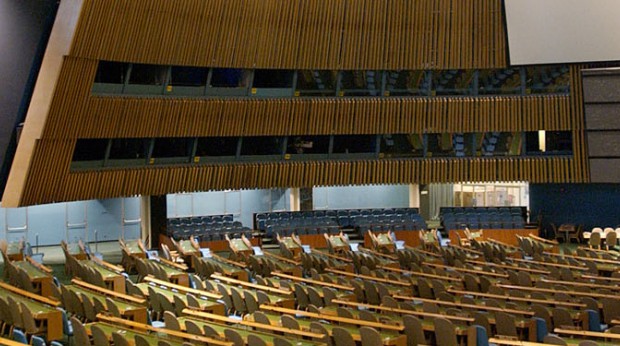
Transforming the Approach to Funding Peacebuilding: Challenges and Opportunities
One message that came out strongly from the 2020 Peacebuilding Architecture Review is the need to strengthen global efforts to ensure adequate, predictable and sustained financing for peacebuilding.
The first step in mobilizing around this need was undertaken on 26 January 2021, when the Secretary-General hosted a high-level Replenishment conference for the Peacebuilding Fund to generate increased funding, as the Fund suffers from consistent underinvestment, especially in the wake of COVID-19. As a result, 39 Member States pledged over 349 million dollars towards the Fund’s 2020-2024 strategy, which has a goal of 1.5 billion dollars.
However, what does this result do for local peacebuilders?
Mentions of the importance of investing in the work done by civil society, particularly local peacebuilders, were largely absent from the conference. This is problematic because in one way or another peacebuilding financing impacts the every-day life of local peacebuilders.
Local peacebuilders are important actors in creating and maintaining peace, because they are the first responders to conflict and have the most expertise in identifying root causes of violence. For that reason, it is important that they receive the necessary funding for their work in a way that allows for their joint ownership over the peacebuilding process.
Currently, the Peacebuilding Fund mostly funds larger organisations, like UN agencies and INGOs. This leaves little space for local peacebuilders to sustain their work in the long-term, especially in the context of evolving or protracted crises. The initiative of the Fund to explore avenues to better support civil society’s work in the current strategy is a notable good practice. However, the absence of a dedicated emphasis by donors towards moving this initiative forward remains a challenge.
The reality is that COVID-19 has shifted funds away from peacebuilding. In the coming years, the situation for local peacebuilders will only worsen as a result of the dire socio-economic impact of the pandemic.
As such, the Fund’s donors could consider avenues to better support civil society within existing structures. One avenue to do that is the re-consideration of an intermediary model and supporting models that enable local ownership.
The Peacebuilding Commission, which convenes all the major peacebuilding donors, is also well-positioned to bring together local peacebuilders and donors to facilitate discussions on the existing challenges and to update or create models to better support local peacebuilders. The Peacebuilding Commission already has some synergy with the Peacebuilding Fund, and some Member States called for increased synergy at the Replenishment Conference.
In further discussions on possible avenues to better support civil society through existing funding windows, the following points need to be taken into consideration:
- “Projectation” of peacebuilding hampers local peacebuilders’ efforts. The emphasis on projects and short-term success causes local peacebuilders and smaller organisations to constantly have to seek funding, diverting a lot of time and resources to acquiring more funding, rather than actual peacebuilding. This also creates undue competition between organisations that prevents coalition-building.
- Donor requirements often do more harm than good. For example, organisations may end up spending more on fulfilling donors’ project requirements than peacebuilding. In the form of funding dedicated to a specific theme, those requirements can stifle innovation. Additionally, donors often do not properly account for the indirect costs of running a non-profit organisation.
- Geographic location can make it more difficult for organisations to access funding. Organisations in regions that are not on the Security Council or Peacebuilding Commission’s agenda may have a harder time securing funding, because they are not on the UN’s “radar.”
- A variety of power dynamics continue to negatively affect donor-civil society relations. First, there is an assumed lack of capacity of organisations, leading them to be left out of program design and identification of donor priorities. Ultimately, this still prevents meaningful local ownership. Additionally, there are preferential biases towards larger organisations and white-led organisations, as well as existing donor assumptions that investing in local organisations is “too risky.”


